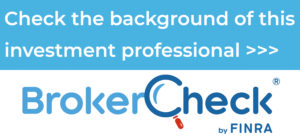Evaluating Mutual Fund Fees and Expenses
Load or no load?
One of the key decisions you’ll face is whether to invest in a load or no-load fund. A load is essentially a sales charge or commission paid to the financial professional or organization that handles your transaction when you buy your shares. If it imposes a load, a fund typically does so in one of three ways:
- A front-end load is paid when you buy your shares. This one-time charge is usually between 3 percent and 8.5 percent (the maximum is set by the FINRA). A front-end load will affect how much of your money actually gets invested. If you have $5,000 to invest and pay a 5 percent front-end load, $250 will be deducted and the remaining $4,750 will be invested. The longer you hold a front-end load fund, the lower the impact on your return will be over time. If the load is less than 3 percent, a fund may be considered a low-load fund.
- A back-end load or deferred sales charge is charged when you redeem your shares. Typically, it’s calculated as a percentage of either your initial investment or its value at redemption, whichever is less. A contingent deferred sales charge (CDSC) is the most common form of back-end load. With a CDSC, the load percentage drops over time — for example, by 1 percent a year. If you hold the fund long enough, the CDSC charged when you eventually redeem your shares is eliminated.
- Level load shares usually have no front-end load, and a back-end load of 1 percent if you redeem your shares within a year. However, a level-load fund typically charges annual 12b-1 fees (discussed below), and as your investment grows, the amount paid in 12b-1 fees rises.
The load percentage may vary depending on how much you invest. Many funds set threshold amounts, called breakpoints, that affect the load you are charged; the more you invest, the lower the sales charge percentage. You also may be able to qualify for a breakpoint discount by signing a letter of intent promising to invest a certain amount over a given period of time.
A fund with a load is not automatically better or worse than a no-load fund. However, you should make sure its return justifies its costs.
Other direct costs
A load is one example of what are often called shareholder fees. Unlike sales loads, other shareholder fees are not considered sales charges; a fund can impose them and still be considered a no-load fund. Depending on the fund, you may or may not be charged such fees. Examples include:
- Redemption fees: A redemption fee is paid directly to the fund when you redeem your shares. Some funds discourage frequent trading by imposing a redemption fee if you redeem your shares before a certain length of time — for example, 30 days — has passed.
- Purchase fees: A purchase fee is paid to the fund when you buy your shares.
- Exchange fees: An exchange fee is paid to the fund if you exchange your fund for another in the same fund group.
- Account maintenance fees: Some funds impose a fee if the value of an account is less than a certain amount.
Indirect fund costs
Every mutual fund charges its shareholders for its annual operating expenses. Those expenses are deducted from the fund’s total assets before its return is calculated at the end of each year. If the fund’s return is listed as 10 percent, your investment has grown by 10 percent, because the fund’s costs have already been subtracted.
A fund’s expense ratio, which is expressed as a percentage of the fund’s net asset value, reflects these annual costs. Comparing various funds’ expense ratios lets you evaluate how much of any gains and earnings you actually receive. A fund’s expense ratio can be affected by its size, how actively it trades, and the type of investments it includes. For example, an actively managed stock fund that invests overseas would probably have a much higher expense ratio than a fund that invests in a U.S. bond index. The lower the fund’s average return, the more important its expense ratio becomes.
The following are typical of annual fund operating expenses:
- A management fee compensates the fund’s portfolio managers and ranges from about 0.50 percent to 1 percent of the fund’s assets. The management fee may be adjusted to reflect the fund’s performance.
- A 12b-1 fee covers marketing and distribution costs, and in some cases the cost of shareholder support services. It is split between the distribution fee, which cannot be higher than 0.75 percent, and the service fee, which is limited to 0.25 percent.
- An administrative fee covers day-to-day operational costs, such as newsletters, record keeping, mailings, etc. The amount ranges from 0.2 percent of the fund’s assets to about 0.4 percent.
- Other fees may include trading and brokerage costs paid when the fund buys and sells securities, and interest on money borrowed money to buy securities.
Before purchasing any mutual fund, you should carefully consider its investment objectives, risks, fees, and expenses, which are contained in the prospectus available from the fund. Read the prospectus carefully before investing.
Thanks for checking out the blog!
This material is for general information only and is not intended to provide specific advice or recommendations for any individual. There is no assurance that the views or strategies discussed are suitable for all investors or will yield positive outcomes. CDs are FDIC Insured to specific limits and offer a fixed rate of return if held to maturity, whereas investing in securities is subject to market risk including loss of principal. This material was prepared by LPL Financial.
The opinions voiced in this material are for general information only and are not intended to provide specific advice or recommendations for any individual. To determine which investment(s) may be appropriate for you, consult your financial advisor prior to investing. All performance referenced is historical and is no guarantee of future results. All indices are unmanaged and cannot be invested into directly.
The information provided is not intended to be a substitute for specific individualized tax planning or legal advice. We suggest that you consult with a qualified tax or legal advisor.
LPL Financial Representatives offer access to Trust Services through The Private Trust Company N.A., an affiliate of LPL Financial.
Gregory Armstrong and Joe Breslin are Registered Representatives with and Securities are offered through LPL Financial, member FINRA/SIPC Investment advice offered through ADE, LLC, a registered investment advisor. Armstrong Dixon and ADE, LLC are separate entities from LPL Financial.
This communication is strictly intended for individuals residing in the state(s) of CO, DE, DC, FL, MD, MO, NY, NC, OR, PA, VA and WV. No offers may be made or accepted from any resident outside the specific states referenced.
Securities and insurance offered through LPL or its affiliates are: 









